It’s sometimes hard to find words when we encounter something new and unfamiliar. It takes work to give name to an experience if it doesn’t fit what we have seen before. If we lack the words, or past patterns to associate with, we may actually ignore what we are seeing. Like islanders who couldn’t conceive of sail-ships and therefore didn’t see them approaching.
Some argue that is the main reason why we live — to make meaning of our experience, especially of the edges of what is familiar. That’s also where we find art: at the boundary of what is our world and what appears like chaos.
Through art we shape new symbols and forms out of the unknown, and bring them to our world. Art allows us to make meaning at the edge of what is history and what is not future anymore, between what is conscious and unconscious. It holds spaces for us to have experiences and expressions of what we are still looking to name. That’s why art is fundamental to leadership, as it allows leaders to conceive of a new world, whilst holding a space to contend with the world that is here.
Leadership as Art & Design
Leadership delineates between new and old worlds: it starts with creation of meaning, or new ways in which we can see our world. As my colleague and friend Gianpiero Petriglieri beautifully put it: “leadership is an argument with tradition”, not unlike art. But, in order for new meaning to be created, shared and debated we need often need new symbols, forms, and language. We rely on art to create these building blocks of meaning but we need leaders to embody them and cohere them. And when art and leadership meet, we start to design, or reshape the world around us, together.
Design is how we conceive and make things beyond us, that are born of the world in us: things that reflect our intent, but also our mystery. Our art helps us deepen the intimacy with that mystery; whilst our intent and leadership, lifts it beyond the impermanence and constraints of our bodies. What gets then designed, and made, is the literal embodiment of that mix: art gives birth to a story, and through leadership it becomes structure in which we can live. In other words, design is the embodiment of leadership in things we make.
But what if art is made by machines?
Seeing design as embodiment of leadership can help us answer the question of what good leadership looks like in a world that is increasingly artificial. Because more and more it’s things that we encounter, rather than people. Or shall we say — we encounter each other through things and in things. But these things were designed: made with intent, and informed by art, good or bad.
But what if art is made by machines, as is increasingly the case with ai-generated art? Generative art has been around since we were able to make machines, but this new technology creates objects that look uncanny. As if they were made by artists themselves. It is beauty and creativity expressed by technology (as opposed to only “through technology”) — something we thought was exclusively human.
The AI-generated images are entering our global consciousness at an astonishing rate, deepening our accelerating entanglement with technology. This explosion seems phenomenal, partly because creation of these images can be completely automated, partly because it only takes few moments to generate multiple versions of them, and partly because people who have never been able to draw or illustrate, now can with just a couple of sentences:
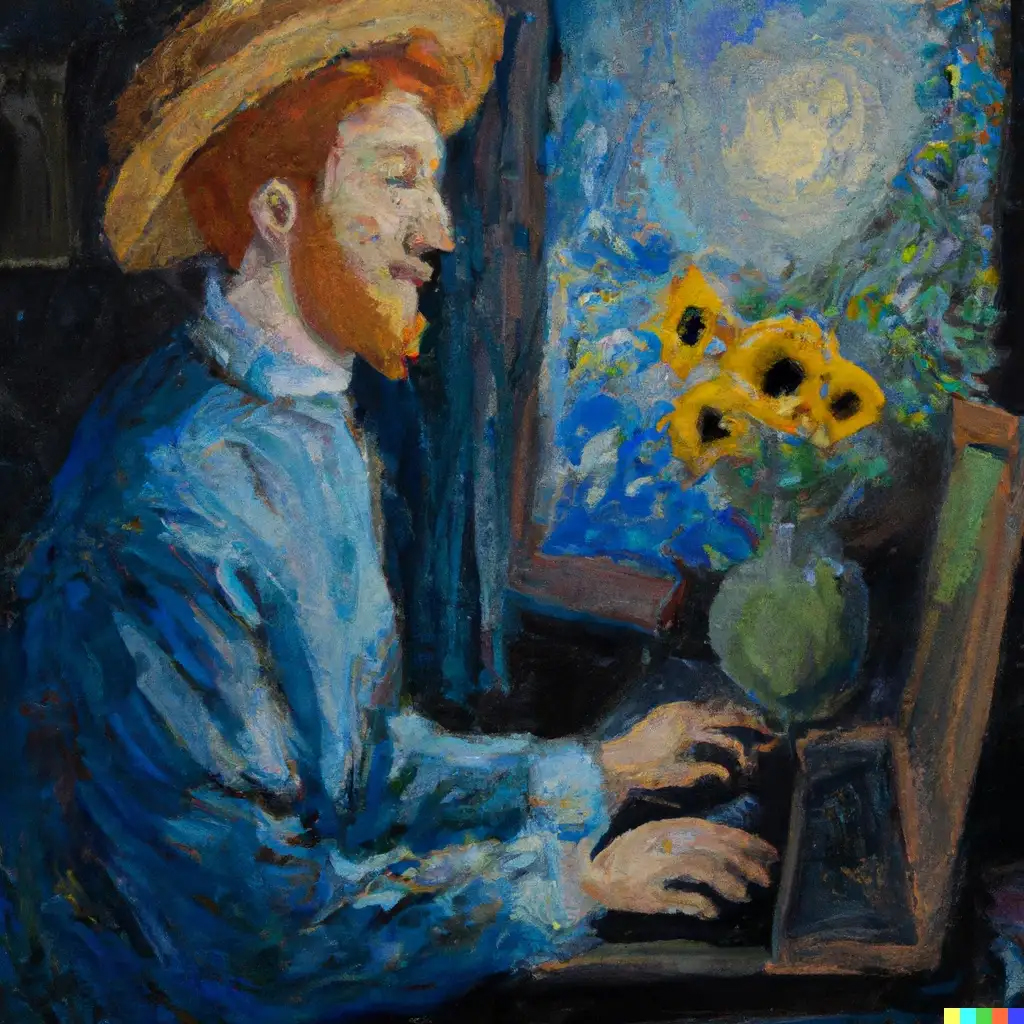
made with DALL-E
“A painting of a person who discovers they can create art by writing words on a computer, in style of Van Gogh”
So is it still art? Yes, if it leads us to creation of new worlds. But is it good art? As in: will we want to live, work and love in the worlds that will be inspired by it?
Well, we will see.
Art and Technology
It’s art in the broadest sense, not technology, that helps us make meaning of the unknown. Technology pushes the boundary of what we can see and experience, but it’s art and humanities that help us make sense of it. As Jonathan Frazen puts it: techne’s intent in itself, its telos, is to make nature predictable for us, controllable and more malleable to our intent — it doesn’t create new meaning in itself, rather it tames the world. Technology’s purpose is to displace nature, so we don’t have to live in an unpredictable, hostile world. But there’s no need for art, or love for that matter, in a world that is entirely predictable.
That is not going to happen, because, to paraphrase Thomas Huxley: “the known is limited, unknown infinite”. I empathise, but don’t share the doom and gloom about graphic design and illustration jobs being taken out of the markets by these algorithms. Being an artist is not a job. Nor is being a leader. It’s not a position, or a title, or even just a skill (lots of pretty pictures out there with no meaning, just as many people out there with amazing resumes and no followers). But our world is getting more complex, so our art needs to become complex too — so that next time someone creates a powerful algorithm, they do it with imagination and foresight rather than compelled by unexplored and artless drive.
When technology is more seductive and beautiful than art…
As an amateur artist, I have to admit that when I first started playing with these tools I was quite speechless. The accuracy of results and the speed with which they worked shocked me and besotted me at the same time. This combination made it even more appealing and seductive.
So to make sense of it, I asked one of the new machine learning tools, #dalle2, to create an oil painting of an artist encountering the ai-generated art for the first time:.

“An expressive painting of an artist looking at images generated by DALL-E for the first time”
To me, these pictures show the ambivalence that people share about this technology: from somewhat fanatical to deeply depressing. But although these images represent emotions, the neural network algorithm that chose the pixel arrangement and colours didn’t feel anything. It had no understanding or moral sense of this context, and introjected no more meaning into them than a brush touching a canvas, or a camera taking a photo.
But that was never how art worked anyway. The meaning is not in the object, rather it is in the attribution. Art is in the experience of it, both as an artist and as the audience.
The meaning, or the lack of it, for the above images comes mostly from the interpretative choices you and I made in participating in this exchange through this essay. I set the context for the images, I told you how they were made, placed them in a certain space, and you made your own sense of them. Art requires work from the artist and from the audience, and its based on the premise that both sides are free in their co-creation of it. Just as the followers create leaders so does the audience complete the art. And understanding context is as fundamental to experiencing art as to leading. Especially, if the design of what goes into that context is captivating and alluring, but not necessarily truthful.
So let me share some of the images I created with these tools, as I used them while pondering ideas around leadership for my upcoming lectures. I played with these algorithms to help me think. To explore new meaning, access new words to convey some ideas around authority and authorship, leadership, role of business, to name a few.
Firstly, here‘s a couple of images that I created with the help of #midjourney to imagine a company culture that is one with nature and environment:
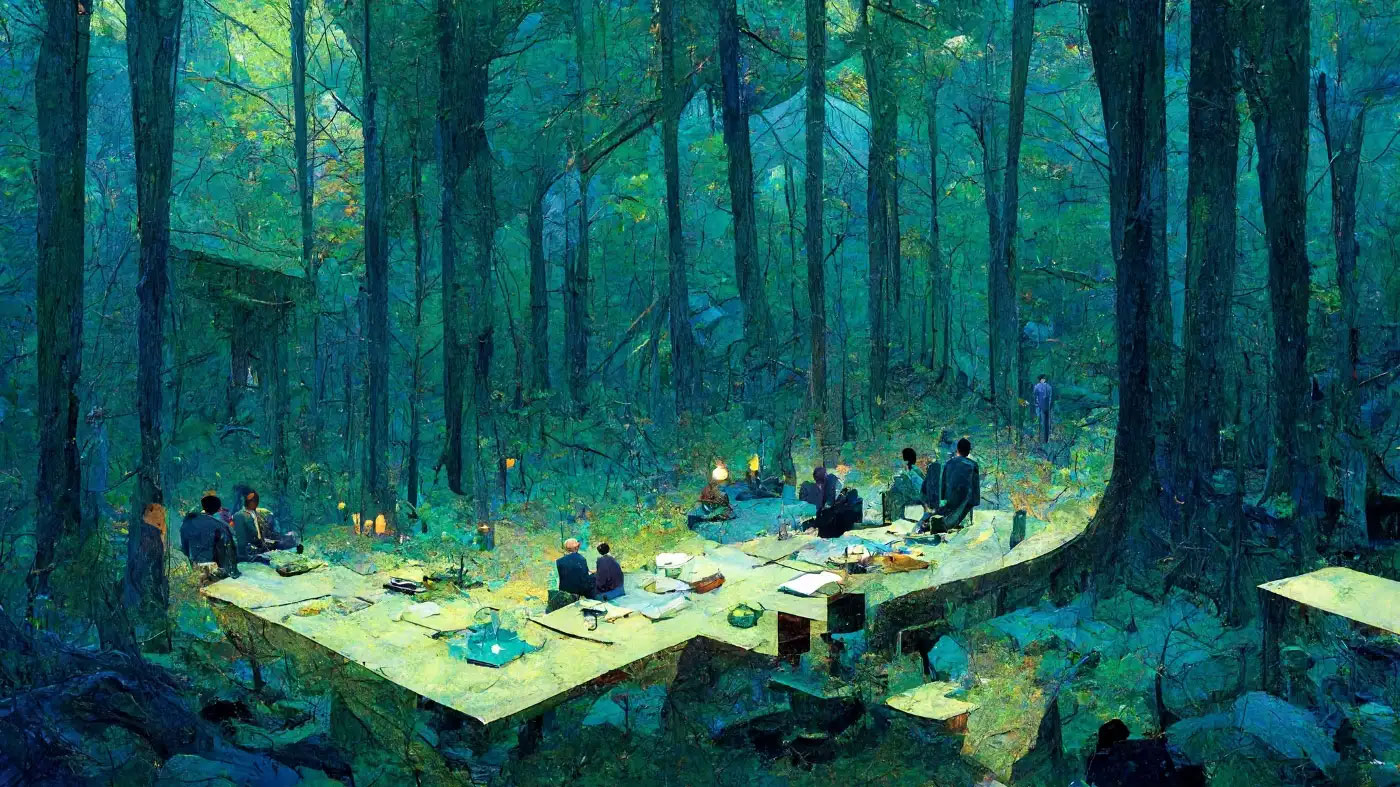
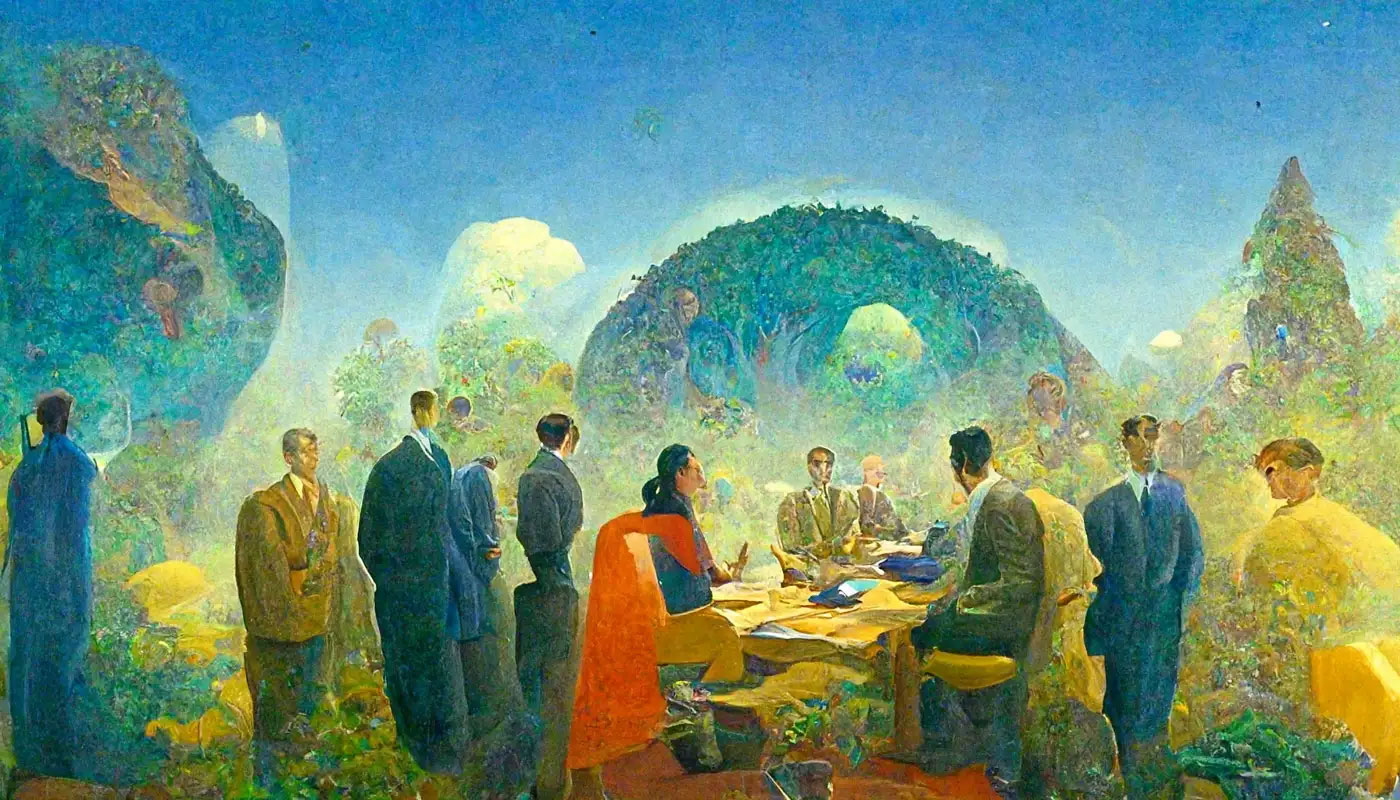
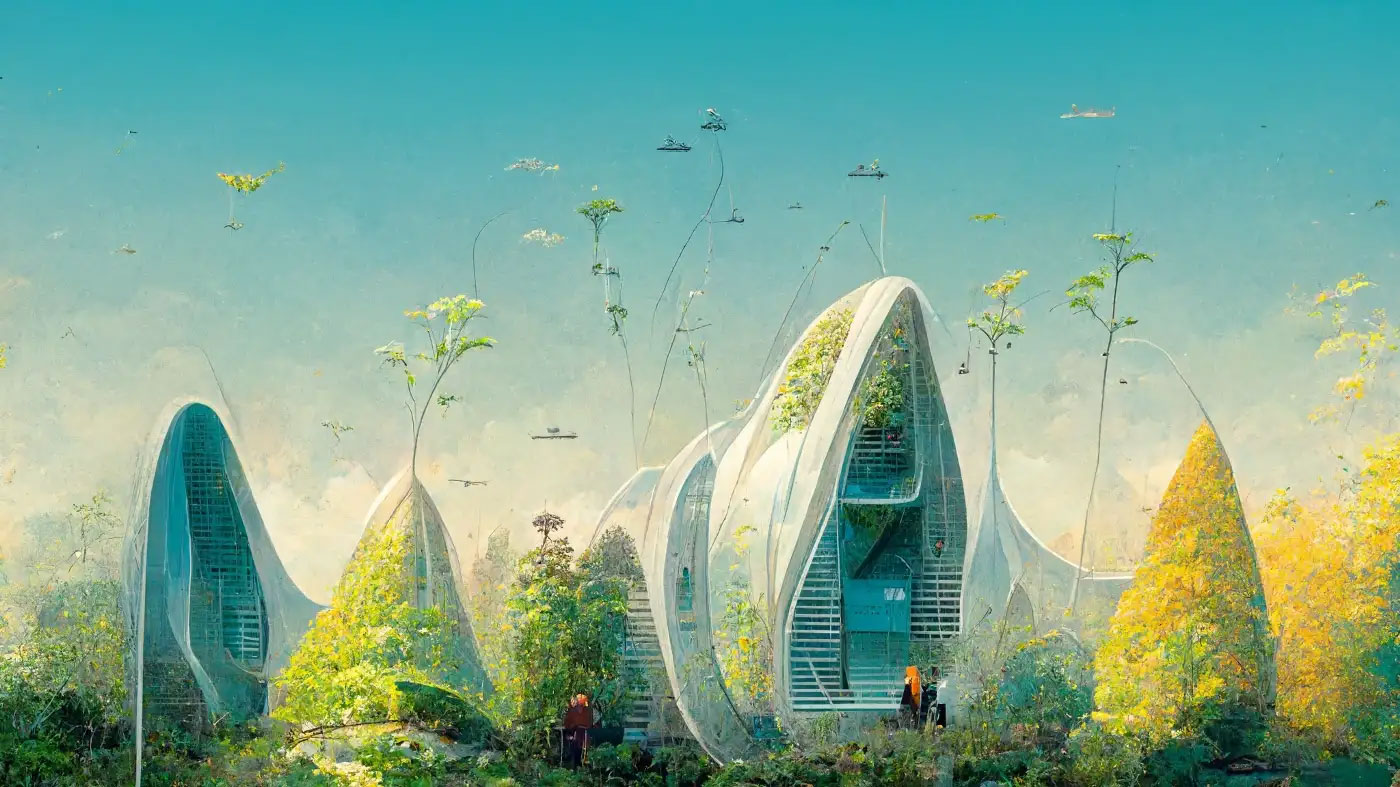
Here is a series in which I explore the idea of authority in its heroic forms, and the bigger-then life metaphors that are so often used to talk about leaders (the titles are not the actual prompts I used):
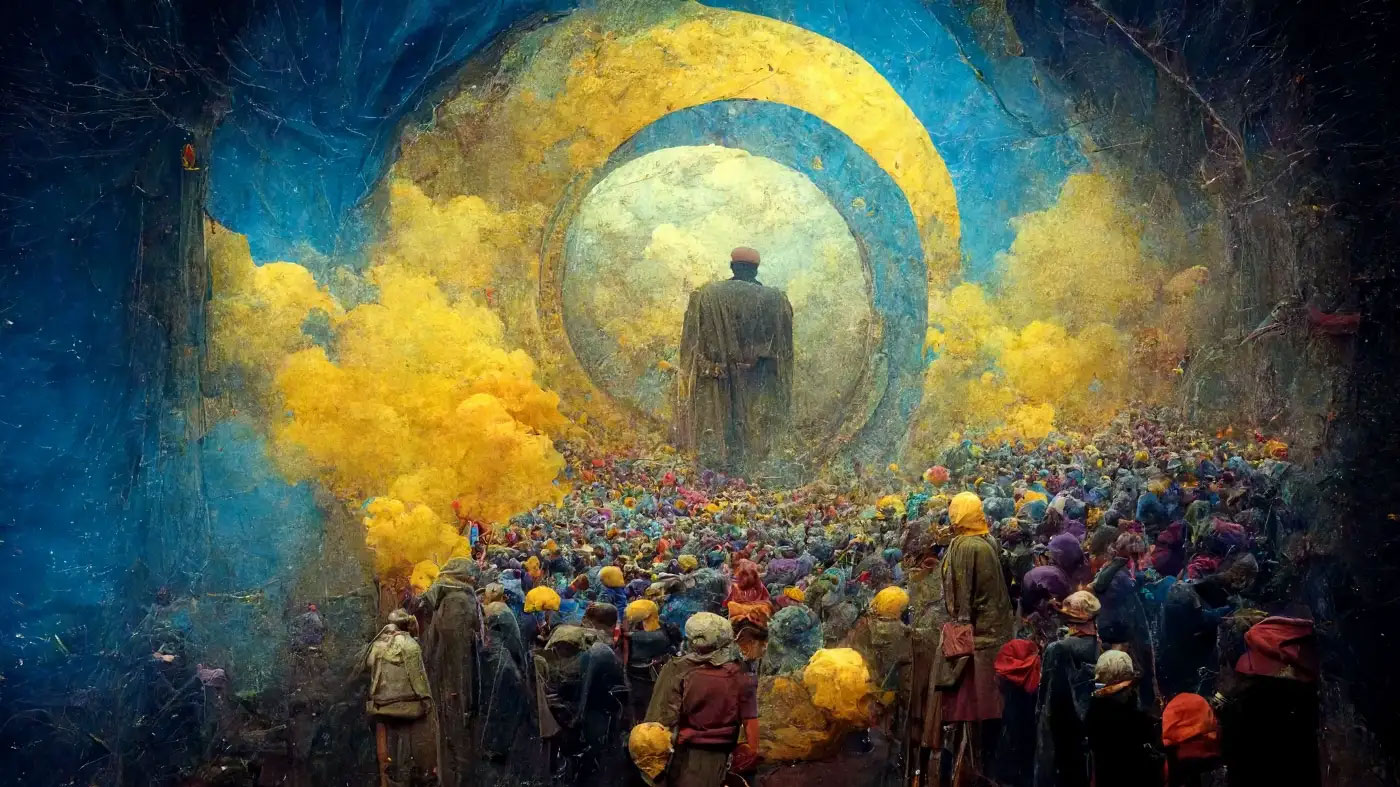
“We created him and worshipped him, called him a hero”
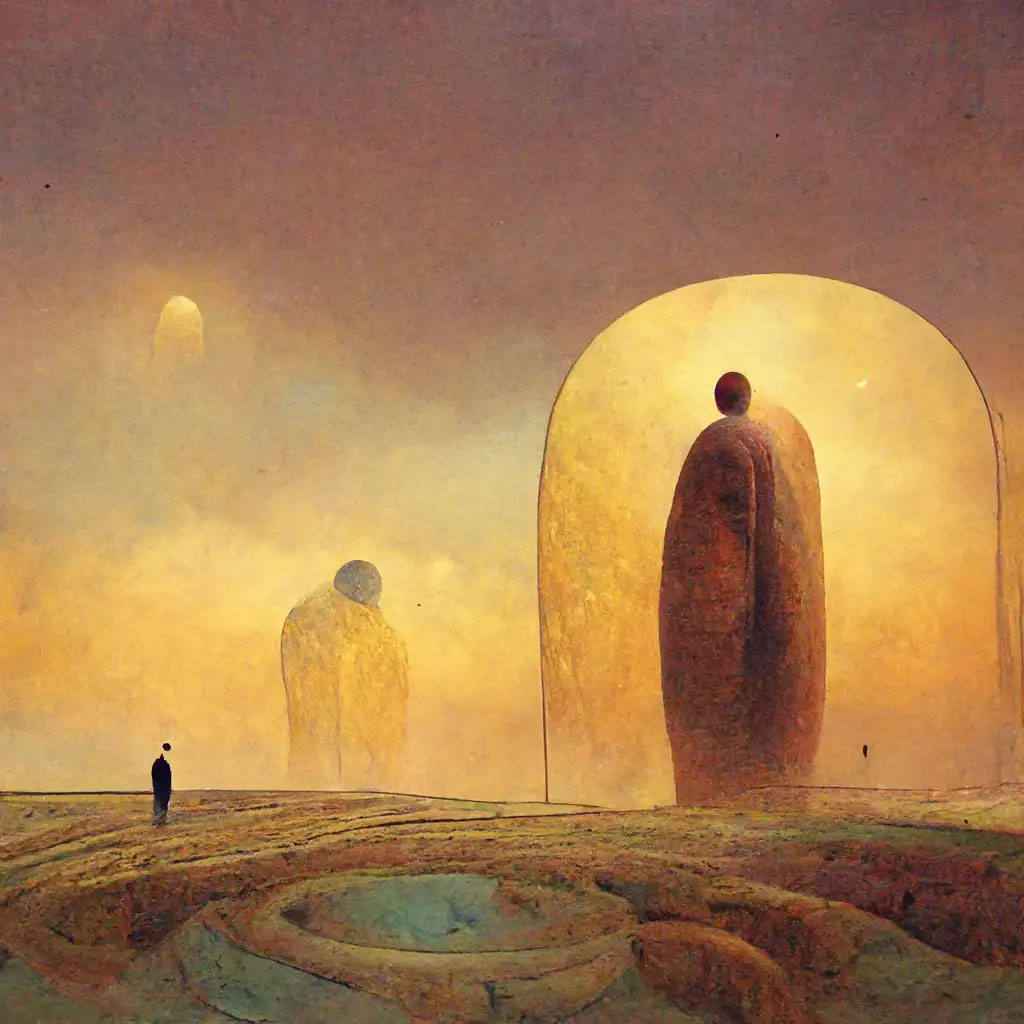
“Dreams of Authority”
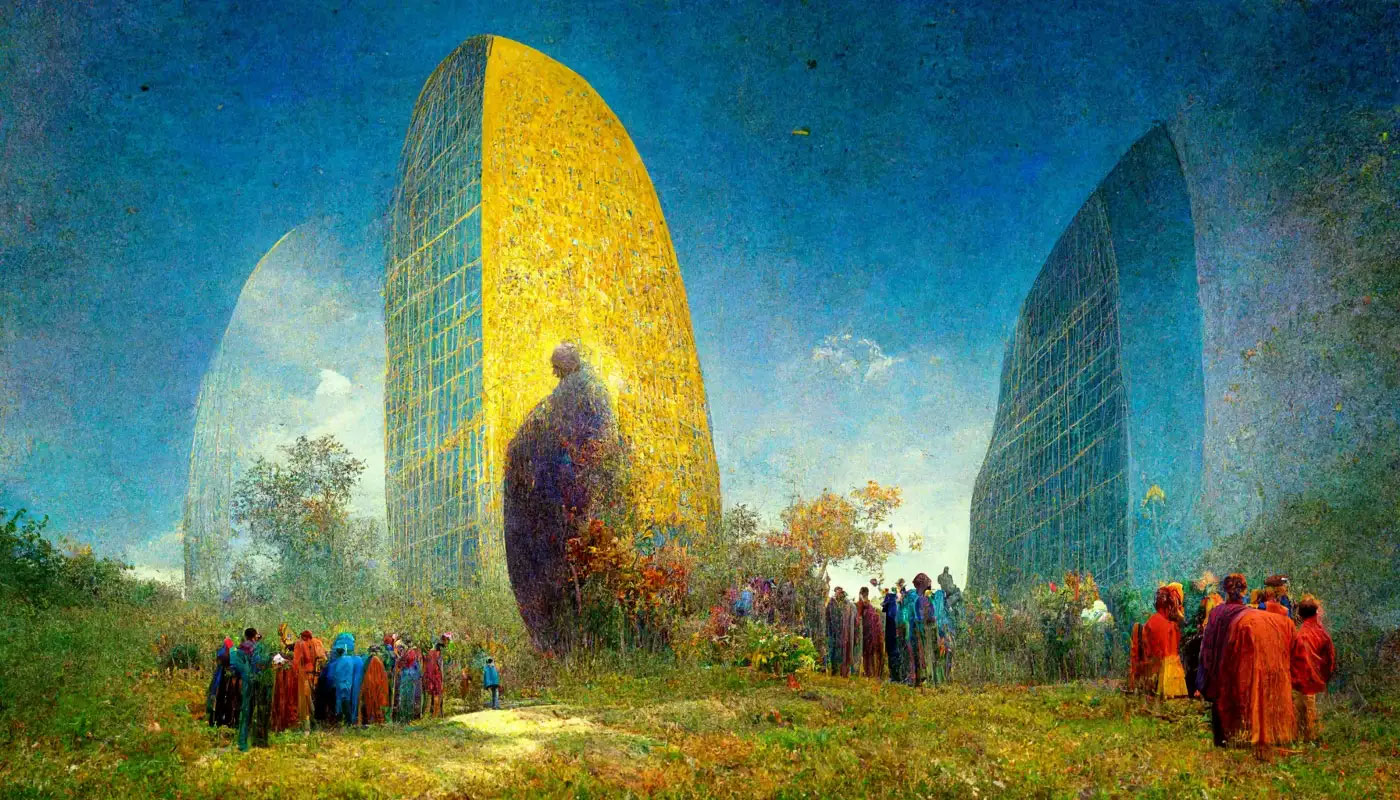
“In the shadows of our Founder”
Here’s an exploration of personas we encounter in workplaces:
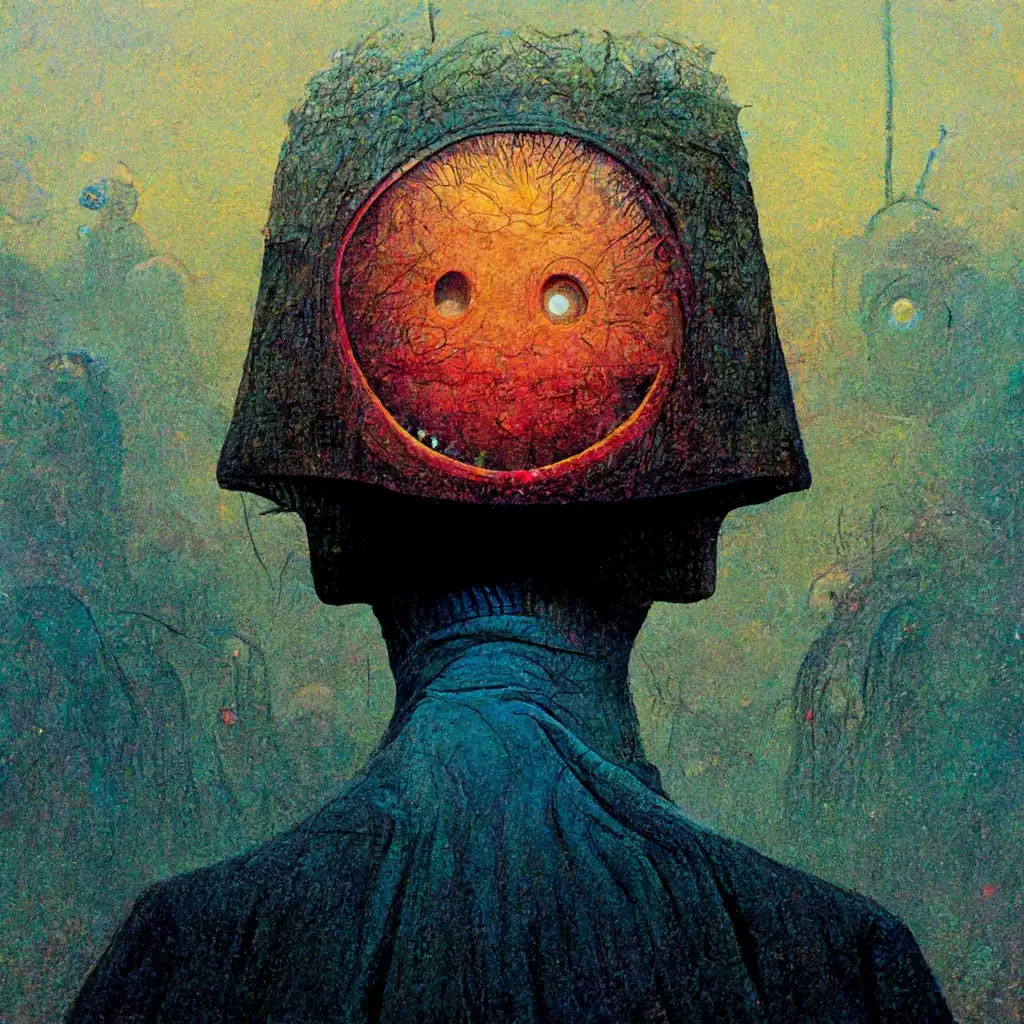
“Good vibes only”
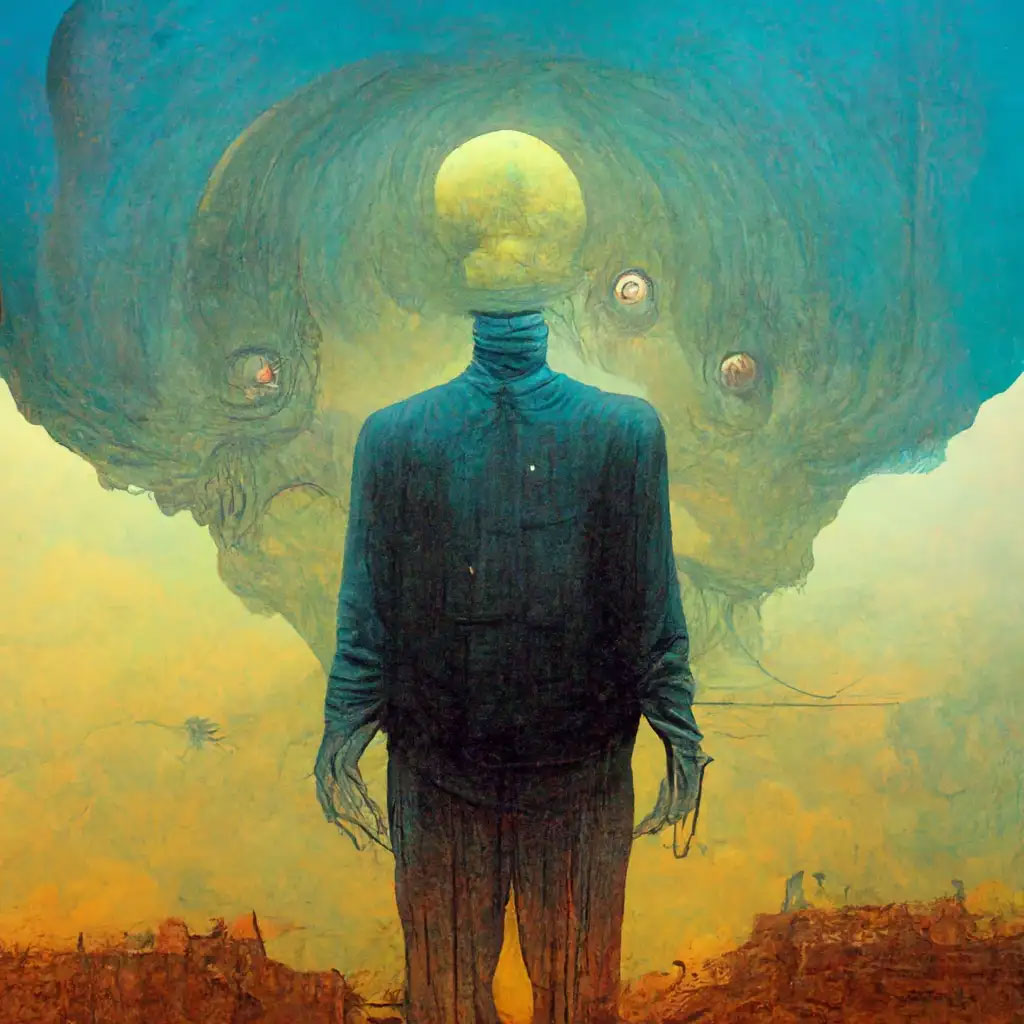
“I leave my emotions at home”
And here’re some experiments in stitching images together to explore the concept of space and how would AI depict corporate offices in style of various artists:
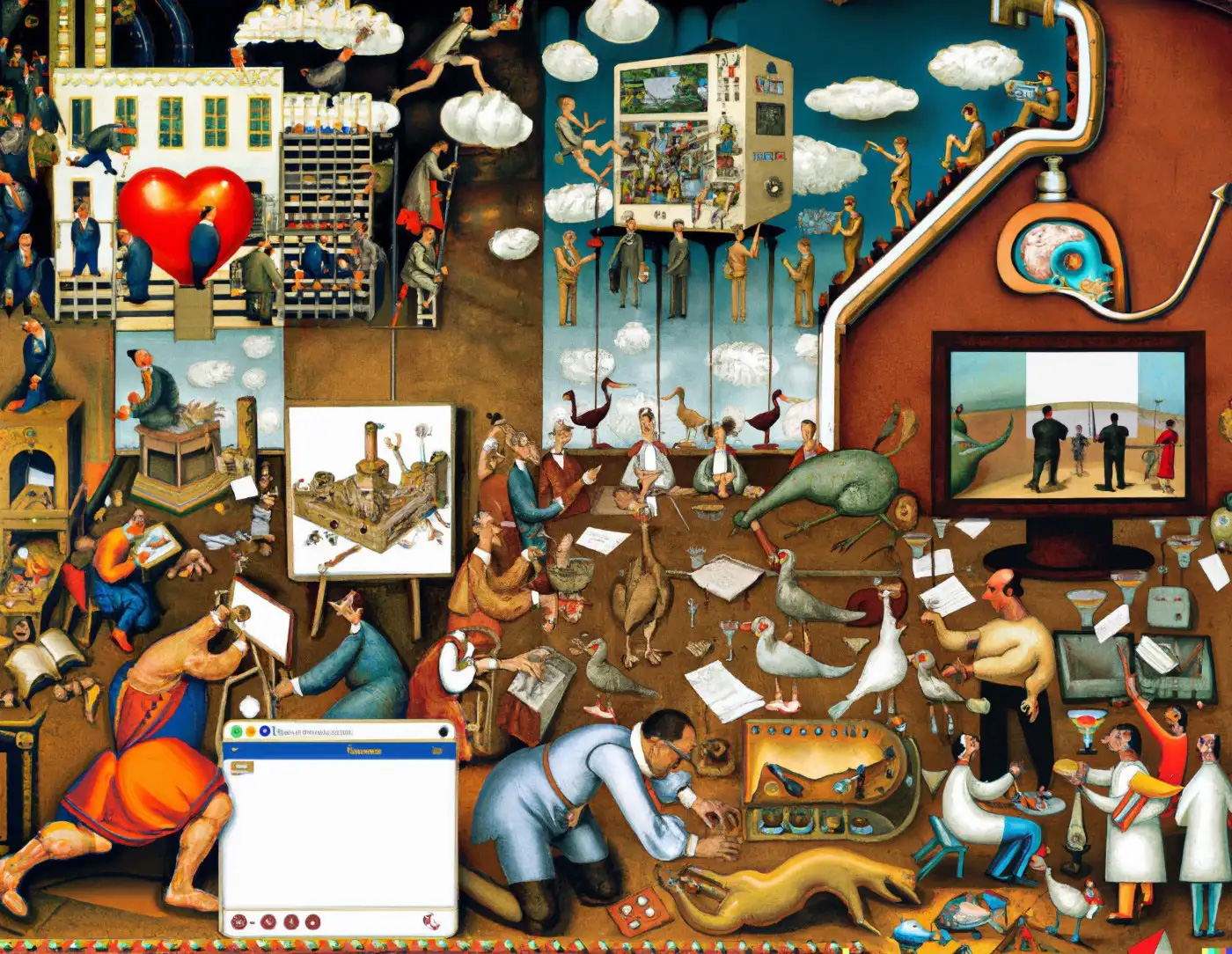
Corporate Office by Hieronymus Bosch
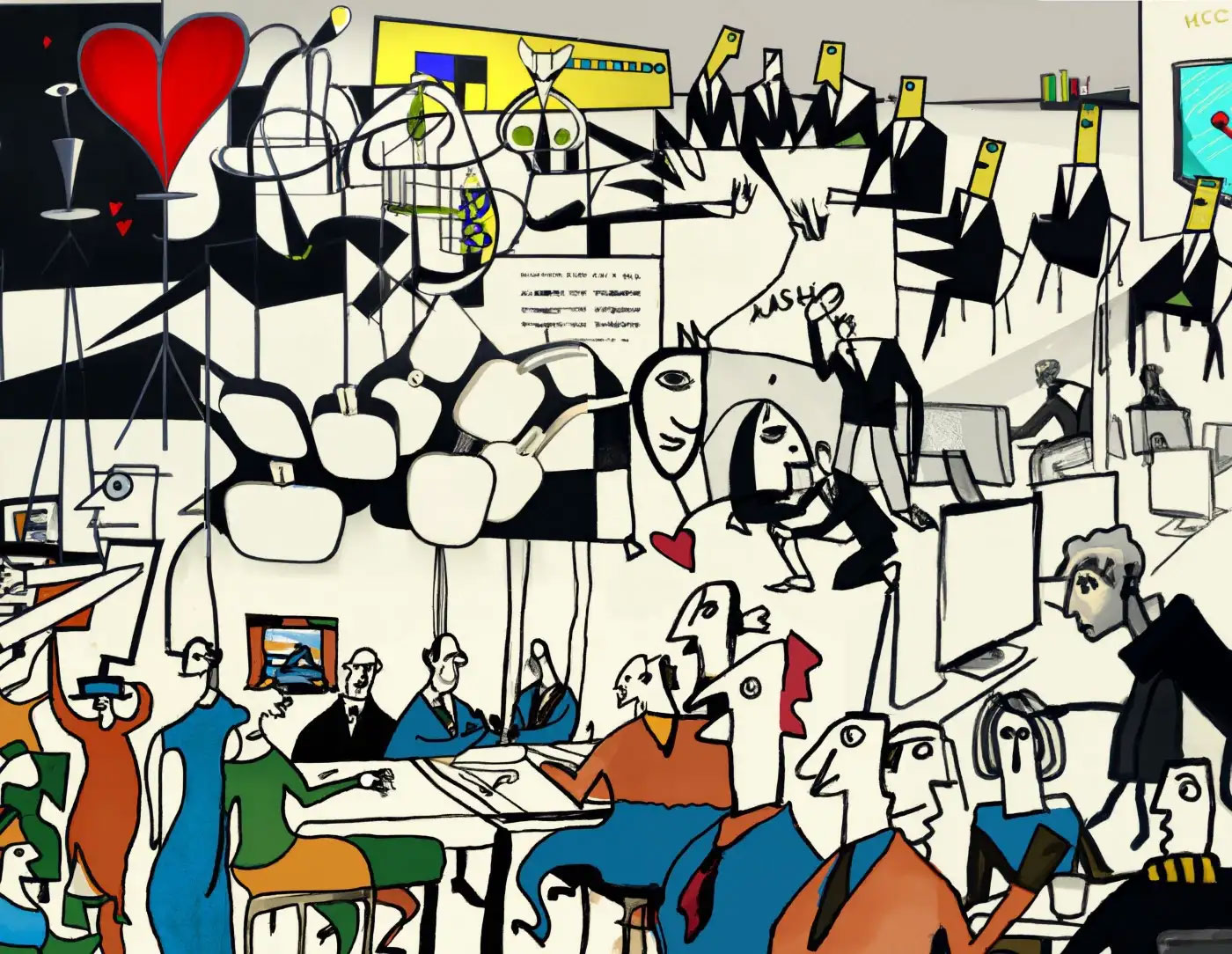
Corporate Office by Pablo Picasso
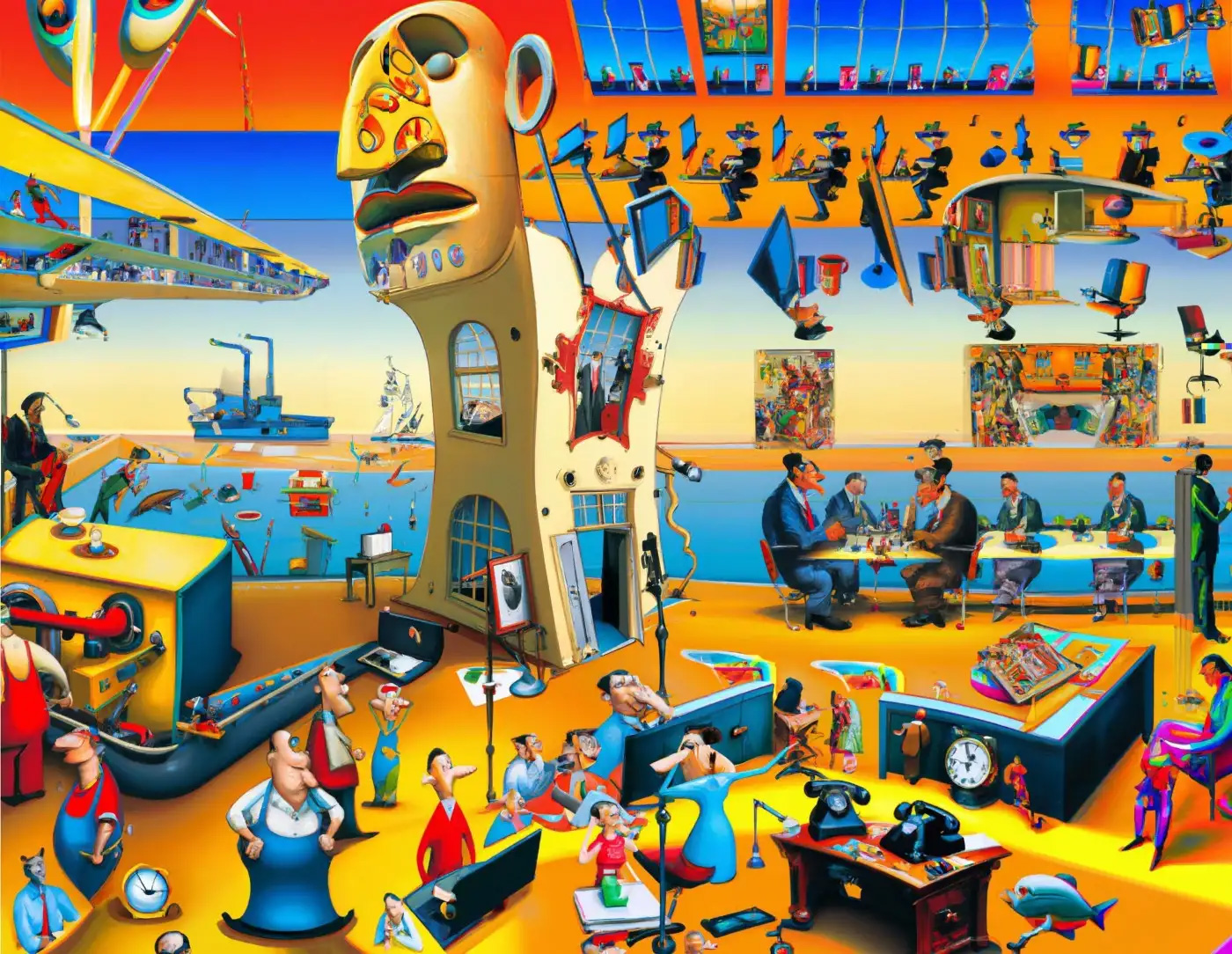
Corporate Office by Salvador Dali
I have to admit I haven’t had this much fun online since the invention of usenet, Internet and Photoshop. It’s a bit like DJ-ing but you work with art styles, cultural references, narrative and language in order to create visualisations of what you intend to convey. My experience has been that in order to create interesting outcomes I really had to know my art references, artists and styles, so I actually appreciated more all that art history studies I undertook long time ago… but it also takes a lot of skill of how the algorithms actually work and interpret language to actually get more meaningful results.
(I have started an Instagram account for the more experimental stuff, if anyone’s interested: @art.e.fish.al)
Yes, some technology can changes us literally and intimately, not just metaphorically (look at cooking). So will this one. But technology doesn’t determine us. We can choose to engage with it in a reflective way, rather than being consumed by it. It can help us create new meaning if we can turn it into art.
Leading in an artificial world is the same as leading has always been — an art that combines the science of the particular and the hearts of the collective. Except that those that have the power to create machines-that-create lead in new ways, ways which have never really previously encountered. Let’s hope that places that these technologies and their makers lead us to, are not birthplaces of ideologies that make us less human.
One time when we invented a technology that scaled power to create worlds was the introduction of mass media. It was a contributing factor to subsequent explosion of global creativity but also to emergence of totalitarian systems. This technology seems to have a much bigger potential. Will it become propaganda for the techno-utopian world? Or will it be a source of insight into our humanity and mystery of life? And what other questions does it pose?
You decide.